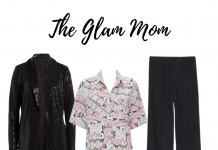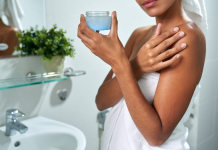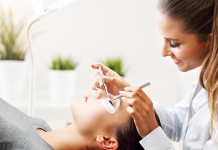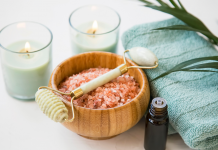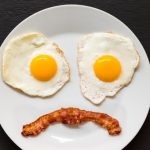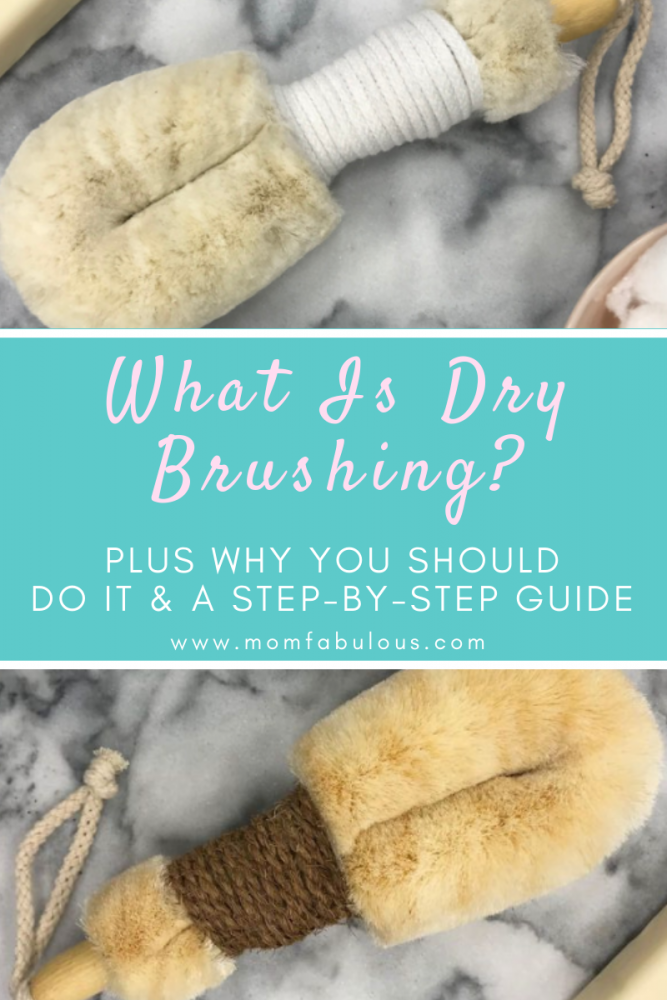
You brush your hair and your teeth. You exfoliate your face, hands and feet…why not brush your skin too?
What is dry brushing?
Dry brushing is an accurate description for this detoxifying technique. It’s brushing your skin with a dry brush, beginning with your feet and hands and working your way toward your heart. This spa treatment is typically performed before showering. It removes toxins from your body.
Unsure if this is a luxurious and effective spa treatment or just a scam? Give it a try. Dry brush your skin using the method described below. Immediately after brushing, rub down your body with a dry washcloth. Stash the washcloth in a zippered bag for a few days, then open it and take a whiff. (We know that sounds gross, but it will solidify the dry brushing case!)
What are the benefits of dry brushing?
To be clear, there are no known scientific studies on the impact of dry brushing. Go to Google Scholar and type in “dry brushing skin” to see the lack of concrete research studies…if you’re a researcher, please consider conducting a much-needed study on this topic!
However, dry brushing is recommended by many dermatologists, wellness bloggers (like Wellness Mama, beauty magazines (including Shape and Self and Allure), and personal testimonies.
Dry Brushing Benefit #1: Exfoliation
As you can well imagine, brushing over the surface of your dry skin with a dry brush will remove excess buildup and dead skin cells, leaving your skin feeling as smooth as a baby’s. Bonus: you will notice this benefit after your first dry brushing session, and the results linger as long as you continue this technique.
Dry Brushing Benefit #2: Cleaner (and smaller) pores
Now that your pores are rid of the grime, oil, and dead skin cells, your pores can be fully cleansed. After a few uses you should notice clean pores that are less noticeable.
Dry Brushing Benefit #3: Improved lymphatic system
Your lymphatic system is a part of your overall immune system. It includes lymph nodes as well as the ducts and vessels which transport lymphatic fluid throughout your body. Because these parts lay just beneath the skin’s surface, dry brushing stimulates the lymph system, causing your body to naturally detoxify itself faster and more efficiently.
Dry Brushing Benefit #4: More energy
Most sources recommend dry brushing in the morning before you take a shower. Dry brushing serves as a tangible stimulation to your skin which increases your blood circulation, and therefore many people feel more energized after dry brushing.
Dry Brushing Benefit #5: Reduce cellulite
Many individuals have claimed that dry brushing reduced their cellulite, but not everyone experienced these results. Hold your expectations in check: dry brushing can remove dead skin cells, reduce inflammation, and help your leg hairs to grow in properly (instead of ingrown), but reducing cellulite is still up in the air. (Although we genuinely hope dry brushing does this for you!)
How to find a dry brush
First it’s important to note that you should use a separate brush for your face and for your body. Obviously, your face is much more sensitive and therefore needs a softer brush, while your body can benefit from a more firm brushing.
There are two main types of brushes:
- Jute. Jute brushes have a softer texture, which is perfect if you have sensitive skin. They’re made from a jute tree, which is native to Bangladesh and India. Try this one.
- Sisal. Sisan brushes have more firm texture, making it ideal as a dry or wet brush. (Yes, you can try dry brushing or wet brushing.) These brushes are made from the green flesh of sisal plants in Tanzania or Kenya. This is a great Sisal dry brush.
How to dry brush
Caution: Consult your physician or dermatologist before dry brushing. If you have sensitive skin, eczema, psoriasis or a similar skin condition, dry brushing is not recommended. If dry brushing causes painful irritation, discontinue use.
- Dry brush before you take a shower.
- Using circular motions, begin brushing your feet. Use light pressure and overlap each area 2-3 times.
- Move onto your legs, brushing in a circular motion as you move upward. As you reach your upper thighs, brush toward your groin.
- Next brush abdomen. Brush your lower abdomen toward your groin, and your upper abdomen toward each corresponding armpit.
- Now brush each arm toward your shoulder.
- Next brush your neck toward your collarbone.
- Lastly, gently brush your face (using a separate brush) toward your jawline.
- After dry brushing, take a shower as usual.
- Moisture your entire body after drying off.
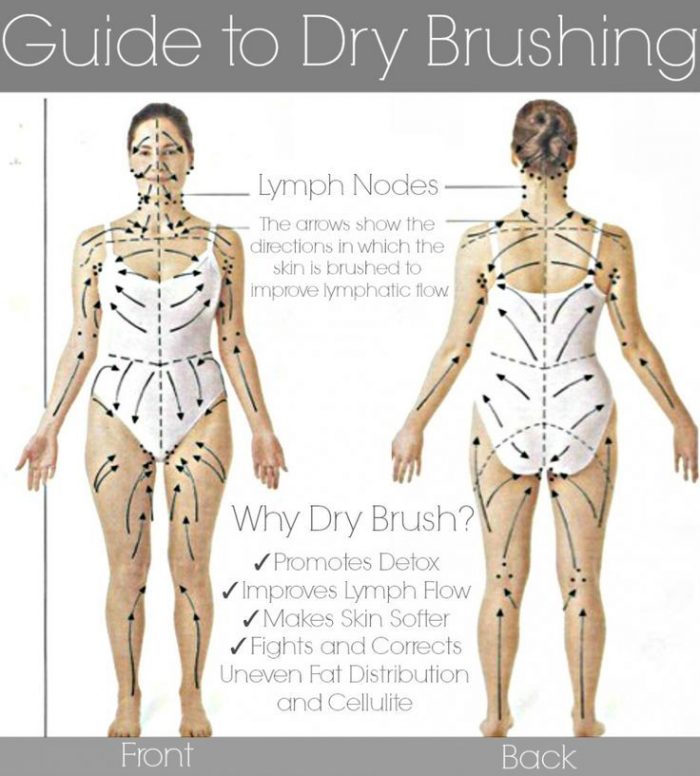
Dry brushing notes:
- Always use a separate brush for your face and your body. If desired, you can use a separate brush for your feet as well.
- Do not brush too aggressively or your can scratch/open your skin. Gentle strokes are effective.
- Always begin brushing with your hands or feet. Always brush toward your heart.
Try dry brushing!
What’s the worst thing that could happen? You give yourself a bit of a rough massage? Or you discover an uncommon beauty technique that will leave your skin feeling as soft as a baby? Most people who try dry brushing love it. After all, we exfoliate our face, scrub our hands, and schluff dead skin from our feet, so why not do the same technique with all of our skin?
Start by dry brushing twice per week for a month. After that, adjust the frequency based on your preferences and results.
Have your dry brushed before? We’d love to hear about your expert tips, brush recommendations, and info for newbies. Leave a comment below to share your dry brushing insights!

